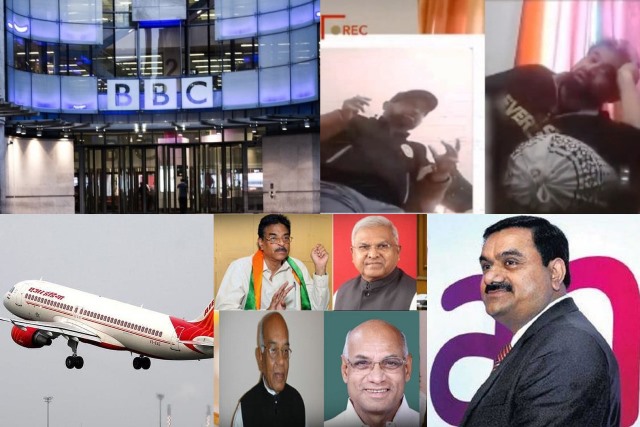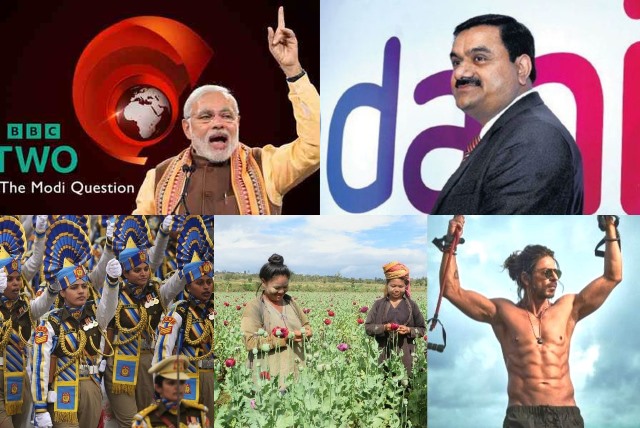Tax Raids to Keep the Media in Check
Last week, for three days, the income tax authorities in India did what they called a “tax survey” of the British news agency, BBC, at its premises in Delhi. For three nights at least 10 journalists, including three editors, were kept there while 50 income tax officers scrutinised documents and emails, and cloned phones and laptops. The so-called survey’s timing was interesting. In January, the BBC had put out a two-part documentary entitled, India: The Modi Question, focused on the Indian Prime Minister Narendra Modi and his relationship with the Muslim minority in the country. The Indian government had moved swiftly to ban the documentary in India and instructed media platforms such as YouTube to pull clips from the documentary from the public domain.
Although India’s information and broadcasting ministry has denied that the “survey” by IT authorities at BBC has anything to do with the documentary, it is widely perceived that the move is designed to intimidate the news agency. That is not an implausible conclusion to draw. Government departments such as the IT authorities, and the police are routinely used by governments–both at the centre and in the states–to keep the media in check.
In recent years independent news organisations such as News Laundry, and The Wire have had to face IT or police investigations. Both the organisations often publish stories and analyses that question the government’s policies or action usually with a spirit of healthy criticism that should characterise a country’s media environment if it is truly free.
The government has also cracked down on non-media organisations such as independent think tanks, and non-governmental organisations. In 2020, Amnesty International, a non-governmental organization, which evaluates the human rights situation in countries around the world, was banned from operating in India. Last year, the IT department charged three organisations with breaking the laws that govern foreign funding. Oxfam India, the Centre for Policy Research, and the Public-Spirited Media Foundation were raided by the department.
A large swathe of India’s mainstream (or legacy) media, which still accounts for the largest reach and revenue in the industry, coasts along unintimidated mainly because it doesn’t rock the boat by “offending” those in power either on account of being compromised politically or economically or because it considers it a safer option that critiquing authority. For example, few mainstream media publications have criticised the “survey” by the IT sleuths at BBC. To really get an idea of what has been happening there, you need to check what the global publications have been putting out.
The amusing thing about the BBC affair is how it seems to have backfired for the government. When the government banned the documentary in January, it sparked a heightened interest among the public for watching it and links via VPN or other encrypted social media sharing platforms got freely distributed. When the IT department struck at BBC, media organisations around the world criticised it but also recapitulated the content of the BBC’s documentary and how it had pointed out Modi’s involvement in the Gujarat riots of 2002 and, later, how after he became Prime Minister, minority communities, particularly Muslims, have faced persecution and discrimination. So if you had forgotten about the documentary, the IT “survey” has, in a way, resurrected memories of it. That’s probably a side-effect that the authorities had not anticipated.
Sting Journalism that is “Safe” and Inconsequential
Who says Indian media are not investigative or that they have lost their voice? If mainstream Indian media want to avoid being taken to task for questioning the government of the day, they can still appear to be vertebrates… because there are always safe topics to get frenzied about. Recently, a TV news channel did what it called a “sting operation” on the chief national selector for the Indian cricket team, which caused him to resign.
The chief selector (who is now an ex-chief selector) apparently talked to the news organisation about how Indian cricketers use “fake fitness injections” to appear fit to play matches even when they were not and how the team’s former captain, Virat Kohli, might have had ego clashes with the Board for Cricket Control in India’s (BCCI) president and also a former team captain Sourav Ganguly. Exciting stuff, is it not?
You may argue that in a cricket mad country such news is grippingly riveting. The jury is out on that. What perhaps is certain is that for such investigative “sting” operations, the TV channel in question will not attract the attention of the Income Tax sleuths. Bravo!
Air India’s Jaw-dropping Boeing & Airbus Deal
Air India, India’s premier airline that was bought by its erstwhile owners, the Tata group, last year, ordered a record number of 470 planes from Boeing and Airbus in a deal that is estimated to cost more than US$100 billion. This is part of a huge revamp of the airline by the Tata group and involves the purchase of 220 aircraft from Boeing and 250 from Airbus.
This move by the Indian airlines could be seen as the beginning of a recovery in the air travel market after the unprecedented slump that it witnessed during the pandemic years. Both the US (where Boeing is based) and France (where Airbus is headquartered) are predictably thrilled by Air India’s deal and presidents–Joe Biden and Emmanuel Macron–spoke with Prime Minister Narendra Modi about it.
Air traffic is predicted to rise sharply in India with an estimate that passenger traffic will rise 7% annually for the next 20 years. The government also has plans to build nearly 80 new airports in the country.
As for Air India, the new owners face quite a challenge in revamping the airline. When it was sold by the government to the Tatas, Air India is reported to have been losing $2.6 million a day and its record for performance and customer service was poor. The big deal to acquire a new fleet could be one step towards improving things at the company.
Centre-friendly Guvs for 13 States
In a predictable move, 13 states have got new governors appointed for them. While the appointment of governors is something that the President of India does, it is just a formality for the president’s office; the real choice of who will be the governor of a state is done by the ruling regime, i.e. the central government.
Although the post of the governor is largely ceremonial, increasingly the office has been occupied by persons who are supportive of the Centre and the regime in power. That is alright as long as the state is allied with the Centre. In cases where states are run by parties that are the ruling BJP-led central regime’s rivals, placing a governor who owes allegiance to the Centre can be a tactical move aimed at countering the state’s policies.
Most of the new appointees in the latest reshuffle are very senior BJP or RSS members. No surprise!
Continuing Saga of the Adani Group
Even as the Adani Group’s stocks began witnessing a recovery around midweek last week, the sell-off started again. This time it was believed to have been sparked by a comment made by George Soros the businessman, investor, and philanthropist, George Soros who said that the Adani Group’s crisis will lead to a “democratic revival” in India.
Clearly aimed at the ruling regime, which has come under criticism for Prime Minister Narendra Modi’s closeness to Gautam Adani, Soros’s statement led to a quick response from the government with the Union minister Smriti Irani retorting that Soros had “now made known his ill intentions in the democratic processes of India.”
Meanwhile, the Supreme Court in India has begun hearing in the Adani group’s suit filed against Hindenburg Research, an activist short-seller that has accused the group of financial manipulation.
Read More:http://13.232.95.176/

